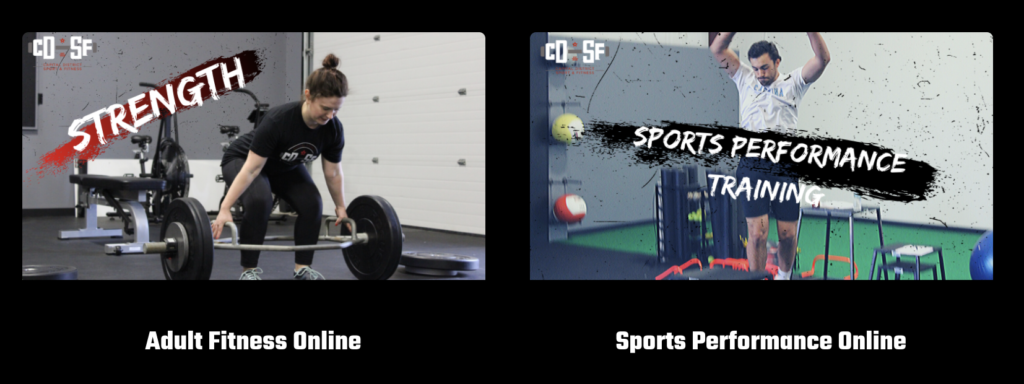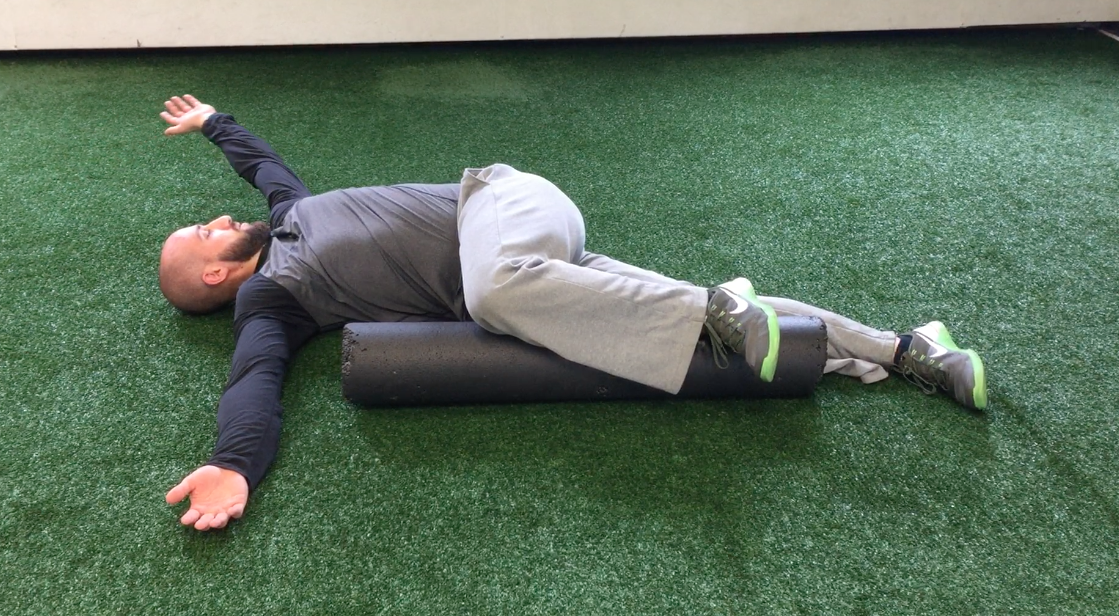Most of us live in a world where our daily routines involve hours spent in front of a screen, in a car, or on a couch. As the hours you spend sitting accumulate, it’s likely the mobility of your hips, spine, and shoulders will begin to decrease. However, most of us may not see the negative effects of this decreased range of motion until we ask our body to perform an activity that challenges these ranges.
For example, let’s say you used to be a great baseball player in high school and golfed every summer with your buddies. Flash forward years from then and now all of the time you’ve spent at your desk has caused your shoulders to get tight and you no longer have the range of motion you once had. Your golf swing just doesn’t feel right, and throwing a round of batting practice leaves your shoulder feeling sore for days.
In this article we’ll cover four simple steps for how you can improve your thoracic mobility, which will allow your shoulders to feel looser, neck to feel better, and rotational activities like golf, baseball, and tennis feel easier.
Step 1- You Must Earn the Right to Rotate
Your body moves in three planes of motion:
- The Sagittal Plane (moving forwards and backwards like sprinting)
- The Frontal Plane (moving side to side like doing side shuffles)
- The Transverse Plane (moving rotationally like hitting a golf ball)
Earning the right to rotate means you must first master moving in the sagittal and frontal planes. If you don’t do that, movements in the transverse plane will involve compensation and make you prone to overuse injuries. If you’re a golfer and don’t learn to control the sagittal and frontal planes, you’ll likely see early extension or sway in your swing, making it more likely for you to experience lower back pain.
A baseball player who can’t control the sagittal and frontal planes may experience more stress at their elbow or the front of their shoulder when throwing.
Below are three great exercises that will help you earn the right to train with rotational exercises and perform rotational movements safely and effectively.
1. SUPINE KB PULLOVER FROM 1-LEG GLUTE BRIDGE
Goals: Sagittal plane control by feeling your glute and abs work hard.
Why: To prevent overuse injuries of your lower back commonly seen during rotational activities.
2. LEG LOWERS W/ 2-ARM KB REACH
Goals: Sagittal plane control by feeling your abs work and keeping your lower back on the floor while lowering each leg.
Why: To prevent overuse injuries of your lower back commonly seen during rotational activities.
3. SPLIT-STANCE MINI-BAND ER + LATERAL MINI-BAND WALK
Goals: Frontal plane control by feeling your glutes work
Why: To prevent excessive lateral movement that cause hip and back pain commonly seen during rotational activities.
Step 2- Learn to Dissociate Shoulder & Hip Movement
Once you’ve earned the right to train thoracic rotation, you then have to learn to dissociate movement of your shoulders and hips. Just because you have the range of motion, doesn’t mean you have the motor control to separate rotation of your hips and shoulders. If you can’t dissociate, you’ll likely compensate when more speed is added to your movement — and most recreational sports that require rotation take place at higher velocities, like swinging a golf club, throwing a baseball, or swinging a tennis racket.
Below are two great exercises to practice dissociation between your hips and shoulders.
Step 3- Increase Pec & Lat Length
Tightness in your pecs and lats will not only decrease range of motion at your shoulder joint, but will limit how much you’ll be able to rotate. Tightness in these muscles will pull your shoulders forward and cause your upper back to round too much. To get a sense for what this feels like, lean forward and round your upper back. Now try and turn to the right and left; you won’t be able to turn very far. Now sit up taller with your chest and turn to the right and left, and you’ll notice how much more you can rotate when you allow your pecs and lats to lengthen.
Step 4- Train Thoracic Rotation
The final step in increasing your ability to rotate your thoracic spine is to actually train the rotation. And if you’ve gone through steps one through three, you should be confident that you’ll be able to rotate without having to compensate through your lower spine or hips.
Here are three of my favorite drills for improving your thoracic rotation.
In Summary
If you’re a golfer, baseball player, tennis player, or take part in any sport that demands adequate amounts of rotation in your thoracic spine, it’s extremely important to learn how to rotate properly and train to prevent overuse injuries. If you remember to:
- Earn Your Right to Rotate
- Learn to Dissociate Between Shoulder & Hip Movement
- Increase Pec & Lat Length
- Train Thoracic Rotation
You’ll not only stay healthy, but also increase your performance and improve the way you feel while doing the activities you love.
Want to Learn More About Improving Your Mobility and Optimizing Your Performance for Rotational Sports?
Check Out our Online Adult Fitness and Sports Performance Programs designed by our coaching staff using the same principles we use at our facility with our adult fitness clients and athletes.


